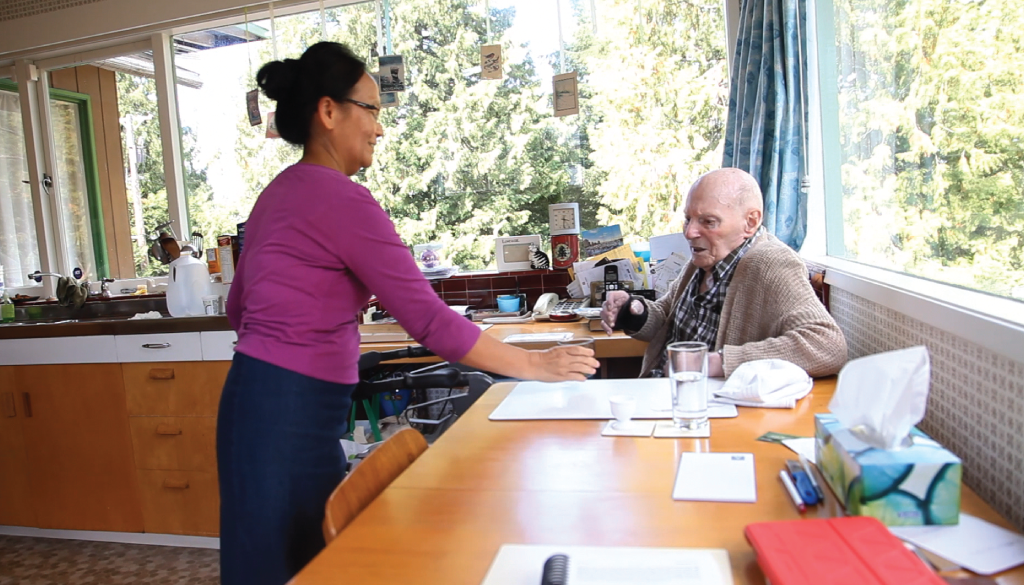Home Care Ontario just released their pre-budget submission, which makes eight recommendations for home care. Among the recommendations is a plea for an investment of an additional $600 million annually in Ontario’s home care system to deliver more front line patient care. This would mean 9 million more PSW (care aide) visits, 5.1 million more nursing visits, and funding to begin to meet the increased demand for therapy and other home care services. This submission was closely followed by their paper More Home Care for Me and You: Preparing Ontario’s Home Care System for the Challenges of Tomorrow, which was released on January 24.
Ontario points to overcrowded ER’s, high Alternate Level of Care (ALC) rates, and the fact that overwhelmingly, Canadians report a preference to aging in place (according to the Canadian Institute of Health Information (CIHI) 87 per cent of Canadians aged 55 or older want to live at home for as long as possible[1]).
As Home Care Ontario points out, a strong home health system is critical to the well-being of the continuing care sector, especially as Canada’s population continues to age, putting a squeeze on acute and long-term care resources. Specifically, by 2038 B.C.’s senior population will account for an estimated 24 to 27 per cent of the population, with the proportion of seniors nearly five percent higher than the Canadian average.
In B.C., providers are faced with many of the same challenges which Ontario is facing. For example, BCCPA’s own 2018 Budget Submission urged the Ministry of Health to address short visit times which have meant that providers who deliver publicly subsidized care must do more with less. Specifically, BCCPA recommended, among a series of other suggestions, that $50 million in annual funding be provided to increase minimum home care and support visit times from 15 to at least 30 minutes as outlined in a new provincial guideline. Following the Association’s submission, the Select Standing Committee on Finance and Government Services released a report which focused prominently on seniors’ care, including the recommendation that:
“Home and residential care staffing and services [be expanded] throughout the entire continuum of care to ensure all seniors have access to affordable, quality care at the right time and at the right place, including investing in new care models.”
BCCPA’s recommendations were informed by the major policy paper Strengthening Seniors Care: A Made in B.C. Roadmap, which was released in 2017 and was arguably instrumental to the B.C. Government’s Action Plan to Strengthen Home and Community Care for Seniors, which directed $500 million to raise staffing levels and direct care hours in care homes, and $10 million investment toward an industry-led Seniors Safety and Quality Improvement Program. In the coming months, BCCPA will also be releasing a major policy paper on home health, intended to make recommendations critical to the sustainability of B.C.’s home health sector.
Home Care Ontario also pointed attention to the need for a comprehensive strategy to recruit, retain and value more professional and skilled home caregivers–an issue which BCCPA has been advocating passionately on. The Association’s latest recruitment campaign #BecauseBCCares focuses on three key areas—job growth in seniors care, job security and the diversity of job available in the sector.
Registration for the 2018 BCCPA Annual Conference in Whistler, B.C. is now open. Join us as this year’s theme Shift Happens! focuses on the many prevalent shifts that are occurring in the continuing care sector.
[1] Canadian Institute for Health Information (2011). Health care in Canada, 2011. A focus on seniors and aging. Retrieved from https://secure.cihi.ca/free_products/hcic_2011_seniors_report_en.pdf





